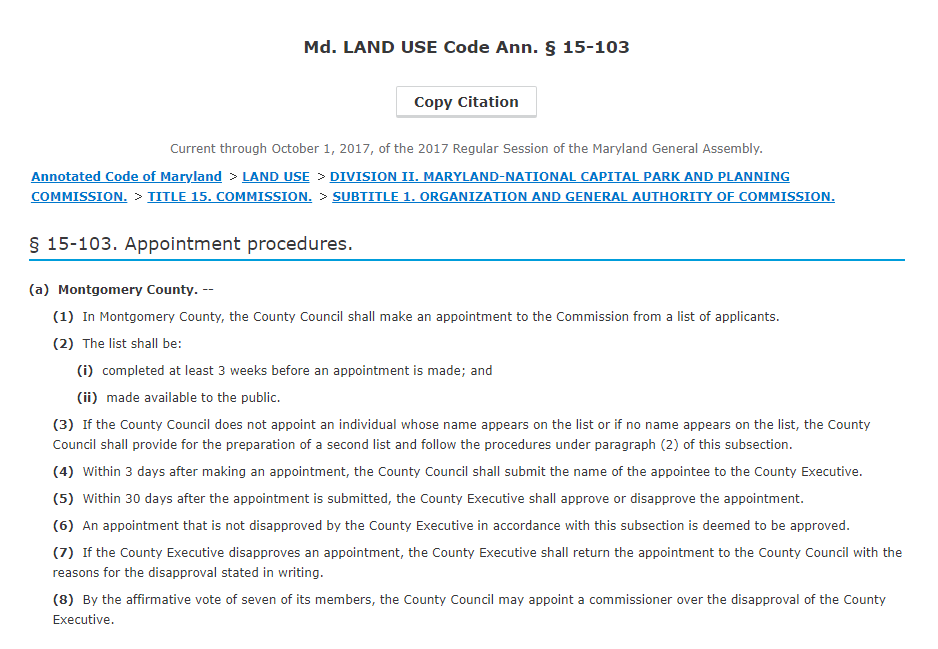By Adam Pagnucco.
Montgomery County’s Charter lays out the County Executive’s powers and responsibilities. The best known include nominating department heads, drafting recommended operating and capital budgets, vetoing legislation, representing the county in public and in Annapolis and directing the operations of county government. It’s a powerful office. But the least known, and one of the most interesting, powers of the Executive doesn’t appear in the charter and has not been used in more than thirty years. If it is exercised by the next Executive, its use could have a significant impact on the county’s future direction.
Land use is a huge issue in county government. It is largely the province of the County Council and the Planning Board. The board makes many recommendations to the council on master plans, zoning, impact taxes, transportation projects, its own agency budget and numerous other matters. In serving in its advisory capacity, the board’s recommendations are subject to final action by the council. But the board has its own powers too, especially in deciding preliminary plans, site plans and other development applications. Individual projects need to conform to applicable master plans, statutes and regulations but it is the board that decides how and whether they do. That’s an enormous amount of authority resting with the board.
The five Planning Board Members are appointed to staggered terms by the County Council. Because of the board’s power and influence, these appointments are taken very seriously by the council and everyone else with an interest in land use decisions. But here is something that relatively few people have known about until now:
The County Executive can veto Planning Board appointments.
Maryland Land Use Code Ann. § 15-103, which we reprint below, lays out the process by which Planning Board appointments are made.
Note that SEVEN of the nine votes on the County Council are required to override an Executive’s veto of an appointment. Under the county charter, six votes are required to override an Executive veto of a bill or budget item.
The last time we know of an Executive vetoing a Planning Board appointment occurred in 1986. At that time, the council appointed Rosalie Silverberg, a civic activist from Bethesda, to the board. County Executive Charles Gilchrist vetoed the appointment because the other four board members were also from Bethesda and the Executive desired geographic diversity on the board. So the council appointed attorney Nancy Floreen, who then lived in Silver Spring, to the board instead. (That turned out to be a momentous decision as Floreen would later go on to be a hugely influential four-term County Council Member and chair of the council’s Planning, Housing and Economic Development Committee.)
The Executive is not commonly regarded as a major player in county land use decisions as the County Council and the Planning Board have direct authority over them. But a determined Executive would only need three allies on the County Council to exert control over the Planning Board through his or her veto power. Such control would not be absolute; the Executive can only veto whereas the council alone can nominate. But it’s easy to see how Planning Board appointments could be high stakes, political confrontations in such a scenario. And when politics gets involved, well… who knows what could happen?
The point here is that an Executive’s land use views matter and he or she has the power to make them stick. Whatever your views on the subject, that is worth remembering in the voting booth.

